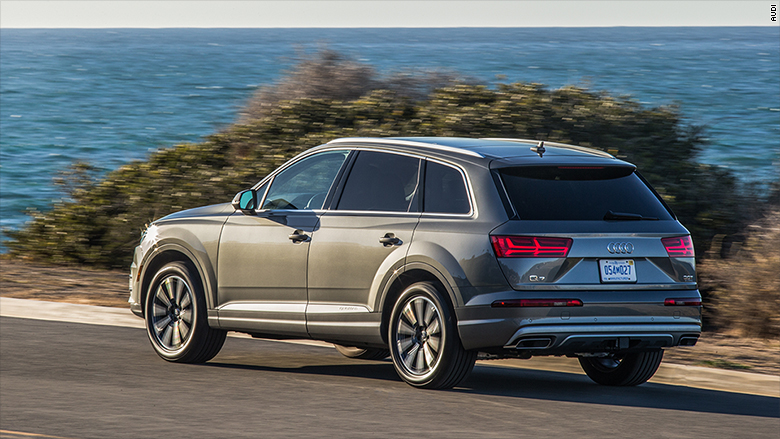
Cars are getting safer.
A new report identified 11 different car and SUV models in which no one died over a four year period.
That's the highest number of models without a single fatality ever recorded by this survey.
The report, from the Insurance Institute for Highway Safety, looks at federal government auto fatality data from 2012 through 2015.
These were the safest vehicles:
- Audi Q7 SUV
- Volkswagen (VLKAF) Tiguan two-wheel-drive SUV
- Toyota Tacoma Double Cab long bed four-wheel-drive pickup
- Mazda CX-9 two-wheel-drive SUV
- Audi A6 all-wheel-drive
- Jeep Cherokee all-wheel-drive SUV
- BMW 535 i and is
- BMW 535xi
- Lexus RX 350 two-wheel-drive SUV
- Lexus CT 200h
- Mercedes-Benz M-class SUV (called GLE-class in its current version)
You might notice that this list is heavy on SUVs, with few small or subcompact cars.
That's really just a matter of physics. If two vehicles, both of which perform equally well in crash tests, meet each other in a real-world wreck, the occupants of the smaller, lighter vehicle will likely fare worse.
In fact, the cars with the highest death rates in that same four-year period are all very small cars. The top three with the highest death rates are the Hyundai Accent, Kia Rio and Toyota's Scion tC.
Volvo promises death-proof cars by 2020
Of course, there are more of some cars than others on the road, which means more people will die in them. So to account for that, the IIHS used a statistic called "deaths per million registered vehicle years." One car of a particular model registered for one year is one "registered vehicle year."

Based on that, the Insurance Institute concluded that full-size luxury SUVS are the safest vehicles on the road. On average, there were just six deaths per million registered vehicle years in big luxury SUVs. Compare that to 87 for the average four-door subcompact car.
The good news is that small cars are getting safer. For instance, the 2014 Hyundai (HYMTF) Accent had a lower death rate than the 2011 model version of that car. The Accent was redesigned in 2012. The same was true of the Kia Rio -- its death rate dropped after it was redesigned in 2012.
U.S. rules cars must talk to each other
Kia spokesman James Bell pointed that another new redesigned version of the Rio will be on the market soon that should be even safer. It will include more high-strength steel and new safety technology such as Automatic Emergency Braking, which brakes the car to avoid or mitigate a crash even if the driver fails to respond.
Hyundai pointed out that the Accent meets or exceeds all safety standards and performs well in government crash tests.
Toyota (TM) said the Scion tC, which is no longer manufactured, lacked crash safety technologies that are available in Toyota's newer small cars.

